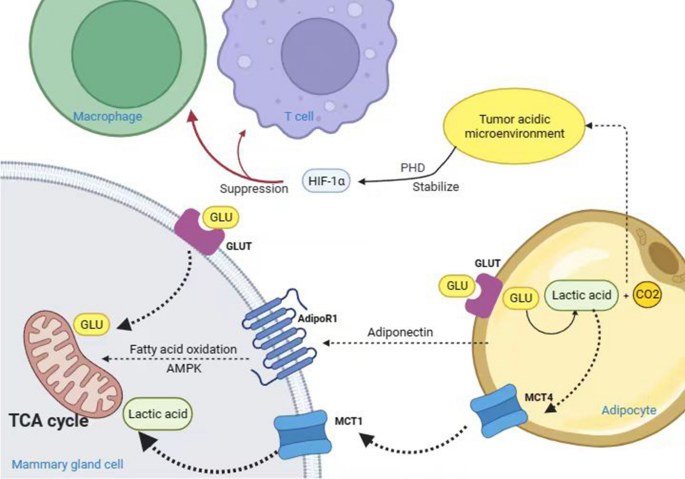Introduction
Hypertrophic cardiomyopathy (HCM) accounts for a significant portion of inherited cardiovascular diseases. The incidence of HCM is estimated to be approximately 2 to 5 per 1,000 people in the general adult population.1-3 HCM often leads to chest pain, dyspnea, and heart failure and is among the important causes of sudden cardiac death. At present, there is a consensus that left ventricular outflow tract (LVOT) obstruction is an important cause of clinical symptoms in most patients with hypertrophic obstructive cardiomyopathy (HOCM). For patients who receive drug therapy but still have significant symptoms or are drug intolerant, septal-reduction therapy (SRT) should be strongly considered. Surgical myectomy (SM) has been the gold standard of SRT because of its efficacy and proven safety. In experienced high-volume centers, postoperative patients of hemodynamic obstruction have a remission rate of more than 95% and have the potential to return to normal life expectancy.4-6 Although the risk of mortality and complications associated with surgery and cardiopulmonary bypass (CPB) is generally low in these patients, morbidity and mortality remain important concerns.
With the advancement in medical technology and the increase in patient desires, there is a strong impetus to evaluate other HOCM treatment options beyond surgery. Alcohol septal ablation (ASA) for treatment of HOCM has been accepted as a less invasive and more effective alternative in suitable patients. In recent years, the emergence of a new interventional therapy, percutaneous intramyocardial septal radiofrequency ablation (PIMSRA [Liwen procedure]), adopts a transapical approach under the guidance of transthoracic echocardiography (TTE) to insert a radiofrequency electrode directly into the hypertrophied ventricular septum. Liwen procedure can reliably achieve the therapeutic goal of the resting left LVOT gradient <30 mm Hg.7-9
Recently, transapical beating-heart septal myectomy (TA-BSM), inspired by strategies such as transapical aortic valve implantation, has shown us a trend that navigates the development of myectomy.10 The pericardium is exposed through a small thoracic incision, and a newly designed device is used to go through the apex of the heart and into the left ventricle, and then advance to the outflow tract under real-time echocardiographic guidance. Hypertrophic septal myocardial tissue, which is captured by the beating-heart myectomy device with negative pressure and a puncture needle, is then excised and removed. In this first-in-human clinical trial, 47 patients received TA-BSM and were followed up for 3 months. Forty-two patients were considered to achieve successful outcome (maximal LVOT gradient were decreasing from 86 [range: 67-114] mm Hg to 19 [range: 14-28] mm Hg). In terms of safety, 1 patient died in hospital (2%). One patient had iatrogenic ventricular septal perforation (2%). One patient had apical tear and was converted to sternotomy (2%). One patient required a permanent pacemaker implantation (2%).
Similarities and Distinctions of PIMSRA and TA-BSM
TA-BSM appears to be feasible as an SRT and represents an important technologic innovation with impressive results. As a minimal invasive, beating-heart treatment without CPB, TA-BSM is of great worldwide significance in the innovation of treatment for HOCM. Although short-term data from the preliminary series cannot confirm the efficacy and safety of this technique, the results of further large-scale, long-term studies are fully expected. As original Asian/Chinese procedures, TA-BSM and PIMSRA share many similarities: 1) both provides SRT for drug-resistant HOCM without CPB or sternotomy; 2) both avoid the difficulties of relying on vascular anatomy for catheter-based coronary approach and minimize complications such as myocardial infarction during ASA; and 3) both have relatively small trauma, concise inserting route, and rapid post-procedure recovery. Specific data are shown in Table 1.
| Approach | First Author, Year | Country | Period | N | Mean Age, y | SCDI, % | Follow-Up, months | Resting LVOTG, mm Hg | Novel Device Success, % | Peri-Mortality, % | New-Onset LBBB, % | New-Onset RBBB, % | Pacemaker, % | VT, % | VSP, % | LVAT, % |
|---|---|---|---|---|---|---|---|---|---|---|---|---|---|---|---|---|
| PIMSRA | Liu L, 20187 | China | 2016-2017 | 15 | 40.7 | 6.1 | 6 | 88/11a | – | 0 | 0 | 0 | 0 | 0 | 0 | 0 |
| PIMSRA | Zhou M, 20228 | China | 2016-2020 | 200 | 46.9 | – | 19 (6-50) | 79/14a | – | 1 | 1 | 5.5 | 0 | 0.5 | 0 | 0 |
| PIMSRA | Wang Z 20229 | China | 2019-2020 | 68 | 47.7 | 4.3 | 12 | 75/12a | 100 | 0 | 1.5 | 8.8 | 0 | 0 | 0 | 0 |
| TA-BSM | Fang J, 202310 | China | 2022 | 47 | 49.1 | 4.0 | 3 | 66/11a | 97.9 | 2.1 | 38.3 | 0 | 2.1 | 0 | 2.1 | 2.1 |
LBBB = left bundle branch block; LVAT = left ventricular apical tear; LVOTG = left ventricular outflow tract gradient; Peri = peri-procedural (<30 days); PIMSRA = percutaneous intramyocardial septal radiofrequency ablation; RBBB = right bundle branch block; TA-BSM = transapical beating-heart septal myectomy; VSP = ventricular septal perforation; VT = ventricular tachycardia.
a P < 0.05.
The principles and mechanisms of the TA-BSM and PIMSRA are different. TA-BSM is essentially a myectomy, but PIMSRA is accomplished by inserting a radiofrequency needle and ablating the myocardium supplied by the left anterior descending (LAD) coronary artery, including the septal perforators. The localized “therapeutic infarction” is induced by ablation energy delivered in the myocardium supplied by LAD artery distribution with minimal injury to the surrounding tissues. These effects eliminate or reduce the LVOT gradient immediately after the procedure, which might result from hypokinesia of the left ventricular (LV) wall and the uncoordinated movement caused by thermal myocardial necrosis. The continuous reduction in the LVOT gradient and septal thickness, as well as the broadened LVOT, possibly result from a local remodeling process caused by ongoing fibrosis and shrinkage of the ablation-induced septal lesion. TA-BSM is an open surgical procedure that requires a small incision—minimally invasiveness—and a pouch suture after instrument removal. PIMSRA is an extremely minimal invasive approach with no surgical wound and therefore less trauma. TA-BSM needs to excise the myocardium from the endocardial surface, which can potentially affect the conduction system and cardiac hemodynamics. The puncture needle of PIMSRA enters the interventricular septum directly from the apex of the heart, without direct contact with the endocardium. Effective management of ablation energy during the procedure can effectively reduce the impact on the conduction system and hemodynamics. TA-BSM is guided by transesophageal echocardiography (TEE), which provides excellent images yet more complex peri-operative set-up. PIMSRA uses transthoracic echo imaging, which is convenient for the comparison of pre- and postprocedure data. In addition, the safety of early clinical trials is different. As a new procedure, TA-BSM has major adverse events (MAEs) including ventricular septal perforation, requirement for permanent pacemaker implantation, left ventricular apical tear, and sternotomy conversion, whereas the 30-day MAEs of PIMSRA are intraprocedural pericardial effusion, hypotension, ventricular tachycardia, and 1 case of late aneurysm of the septal branch.
Significance of Innovation in Asia
The fruitful achievements of innovation in the field of cardiovascular medicine in China and Asia in recent years have helped to advance new therapies for patients with structural heart diseases. PIMSRA and TA-BSM are fueled by patient demand for minimally invasive treatment for HOCM, especially in Asia.
Pioneering the Future Path
Given the rapid advancements in interventional techniques, several trends may be expected in the development of the SRT field in HOCM for the next few years. As the TA-BSM and PIMSRA have different indications and contraindications, reducing the respective complications will be the next priority. Hierarchical management will be more precise, especially for perioperative management of critical patients. Standardized training will be developed to truly achieve individual treatment. Device evolution based on the integration of medicine and engineering will contribute to higher intelligence and less trauma in treatment.
As a first-in-human study, TA-BSM showed promising feasibility and encouraging initial results. We applaud the TA-BSM team for their innovation of transapical beating-heart myectomy to treat patients with severe HOCM and are cautiously optimistic about optimizing PIMSRA (Liwen procedure) and TA-BSM for more eligible HOCM patients in the future.



